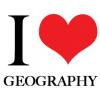- 0 replies
- 2,500 views
- Add Reply
- 0 replies
- 1,515 views
- Add Reply
- 3 replies
- 1,238 views
- Add Reply
- 1 reply
- 1,822 views
- Add Reply
- 2 replies
- 1,549 views
- Add Reply
Klencke Atlas Online

By Lurker,


The Klencke Atlas is one of the world's biggest: it measures 176 x 231 cm when open.
It takes its name from Joannes Klencke, who presented it to Charles II on his restoration to the British thrones in 1660. Its size and its 40 or so large wall maps from the Golden Age of Dutch mapmaking were supposed to suggest that it contained all the knowledge in the world.
At another level, it was a bribe intended to spur the King into granting Klencke and his associates trading privileges and ti
bind layers from database or add new layer(s) to existing layers
By Farzaneh,
First of all, I have to say that I'm new to the OpenLayers. I was used OpenLayers 4 in this project.
We have a map with group layers that can visible or invisible any of them.
var map = new ol.Map({
controls: ol.control.defaults().extend([
new ol.control.FullScreen()
]),
layers: [
new ol.layer.Tile({
source: new ol.source.OSM()
}), new ol.layer.Group({
layers: [
new ol.layer.Til
Help on reading coordinate numbers
By nexaen,
Hello,
I've received following PDF map and text note consisting coordinate numbers to get dimensions of blue hachured areas (tunnels) on the map. Do you know what coordinate system is it? or if you can share some links with me regarding this format?
At first I thought numbers are based on UTM coordinate system, but the PDF map doesn't have any scale on top-&left sides or others sides. So, I cannot read numbers based on that.
Any help would be appreciated.
PDF+text
Invitation for GIS Software Technology Conference 2017
By seanpierrce,
Dear Sir/Madam,
On 24th-25th, August, 2017, GIS Technology Conference 2017 will be held in China National Convention Center, Beijing, China. The conference is themed as 'Geo-intelligence, Driven by Data’, focusing on the technological development and revolution of GIS software, exploring advanced technology applications on various industries.
It is estimated over 3,000 industrial leaders, government officials, experts, colleagues, users and researchers would participate in this confere
Calculate direction / angle between polar coordinates

By sAnSiBaR,
Hi folks,
I think there would be a simple geodetic solution for my question, but let's see:
I want to get the direction like on a compass between 0° and 360° between two polar coordinates.
How does this work?
for example:
r_1 = 4.47 theta_1 = 63.4
r_2 = 6.32 theta_2 = 71.6
For the result it does not matter if north or south, nor if it's 90° or 270°, only the absolute value is relevant.
Cartesian coordinates unfortunately dont work in case if points are vertically alig
-
Forum Statistics
8.8k
Total Topics43.5k
Total Posts


